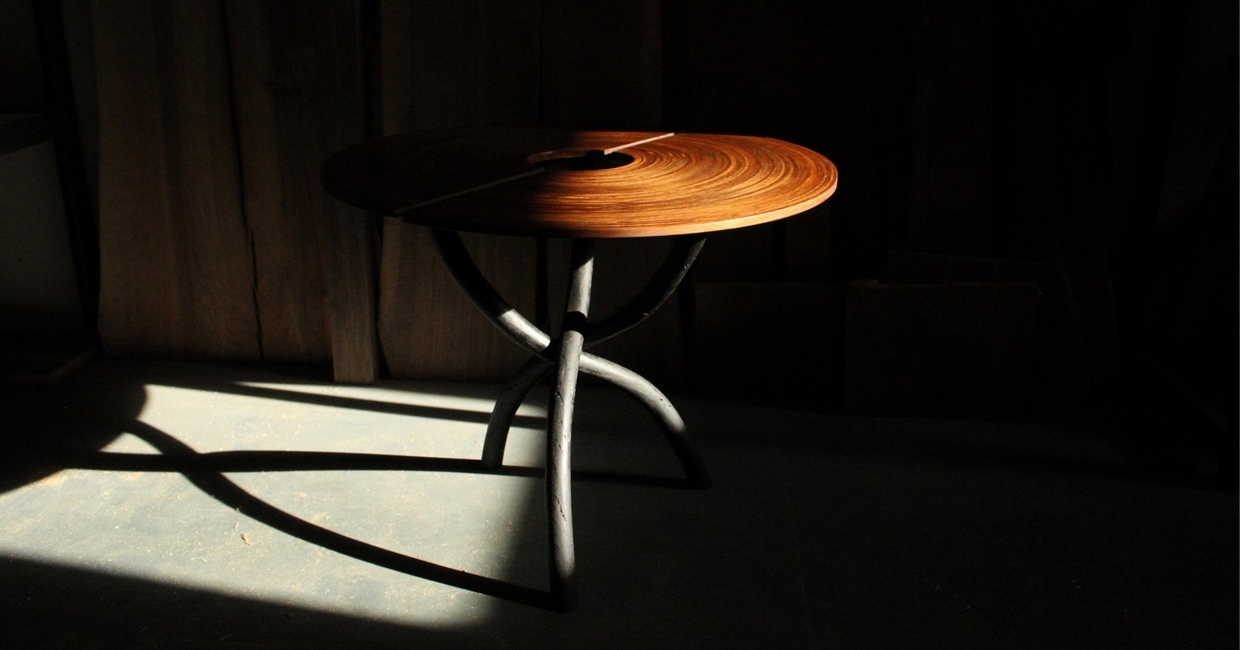Jarrad Belton describes himself as “an enthusiastic, passionate worker of wood”. Working from a small workshop in West Sussex, he creates unique statement pieces using sustainable, locally sourced timber – from large dining tables to sculptural vases. Crafted from hundreds of steam-bent walnut strips and three hand-turned, steam-bent legs in stained oak, Homage to Nature demonstrates Jarrad’s appreciation of natural beauty …
Jarrad studied carpentry and joinery at Chichester College, before working as an apprentice carpenter helping make green oak barns, staircases and building conversions. Jarrad then transitioned to working in a sawmill, before going back to college to study Furniture Making and Design at Chichester College.
He then worked part time as a furnituremaker for a year before deciding to become self employed and focus on it fully. “I have worked with a few designer/makers in this time – most notably Philip Walker, a sculpture artist creating unique forms inspired by nature, and Aidan McEvoy, a master furnituremaker and designer,” he says.
“In Homage to Nature, the tabletop emulates the cross section of a tree trunk. After many months of prototyping I found that to get a perfect match of colour throughout each ‘growth ring’ of the tree I would have to come up with a unique way of converting the timber. There were a few ways of doing this – one was to bend the steam-bent strips around a central point, wrapping them round and round in a circle to create a large circular form.
"I had seen this process before, but I didn’t like that the joints were visible where the length of each strip would run out, and an additional strip would have to be added. So, I decided the best way for me to achieve a colour match without any joint lines was to create two sections from one glue-up. In order to do this I had to create a glue-up I was happy with, then resaw it all the way down the middle to create a perfect bookmatch (and therefore colour).

“Running down the middle of the tabletop is an opening that leads to a hole in the very centre. This detail highlights the human’s interaction with trees, and offers a view of the leg system underneath. Looking straight down on the piece shows the alignment and intricacy of the ‘root system’.
“The intricate legs, or ‘root system’, was just as time consuming to create as the table top. I’d turned the oak legs on a lathe and then steam bent them in a jig to create a subtle flowing form. There were a few attempts at creating the legs, as it was difficult creating a shape I was satisfied with. The leg system emulates the strong roots that all trees possess. I decided to stain the oak black for a couple of reasons. Firstly, roots are underground and therefore in darkness. When you think of a tree, the roots don’t often come to mind as they are unseen. I wanted to capture them with this piece and have them on full display, whilst not taking away from the detail of the top – this is the other reason I stained them, as it creates a contrast between the top and bottom.”









